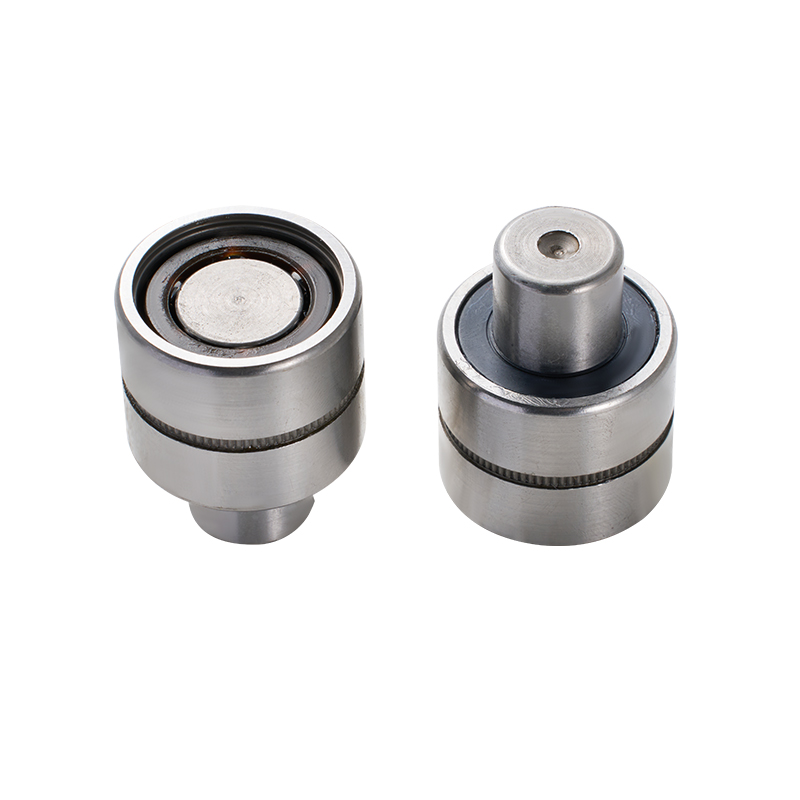One primary culprit behind early automatic belt tensioner pulley failure is improper belt alignment. When serpentine belts don't track greatly straight across all pulleys, they create uneven side pressure that wears out the belt pulley bearing prematurely. This misalignment often stems from worn engine mounts or incorrect installation of replacement components in the belt tensioner clutch assembly. The constant sideways force causes the bearing to develop flat spots long before its designed lifespan.

Contamination represents another major threat to automatic belt tensioner pulley longevity. Road debris, engine coolant leaks, or power steering fluid can infiltrate the belt pulley bearing, washing away its lubricant and introducing abrasive particles. Unlike sealed systems in other engine components, many belt tensioner clutch designs have minimal protection against such contaminants. Once foreign material enters the bearing races, it accelerates wear exponentially through microscopic abrasion.
Excessive vibration from unbalanced accessories also takes a toll on automatic belt tensioner pulley durability. When components like alternators, water pumps, or AC compressors develop internal wear, they transfer harmonic vibrations through the belt to the belt pulley bearing. These vibrations cause premature fatigue in the bearing's rolling elements and races. The belt tensioner clutch mechanism, designed to dampen normal vibrations, can become overwhelmed by these abnormal forces.
Heat cycling presents another challenge for automatic belt tensioner pulley systems. Engine compartments experience dramatic temperature fluctuations that cause metal components in the belt pulley bearing to expand and contract repeatedly. Over time, this thermal cycling can degrade the bearing's grease, create microscopic cracks in races, and eventually cause belt tensioner clutch failure. Vehicles operated in climates or subjected to frequent short trips (preventing proper warm-up) see this failure mode more frequently.
Improper tension settings contribute significantly to automatic belt tensioner pulley wear. While these systems are automatic, they have designed tension ranges. Aftermarket belts that are too stiff or too flexible can prevent the belt tensioner clutch from maintaining good pressure. This guides to either excessive load on the belt pulley bearing (causing overheating) or insufficient tension (resulting in belt slippage that wears pulley surfaces).
Material quality variations between manufacturers also affect automatic belt tensioner pulley lifespan. Premium units use case-hardened bearing races and high-temperature grease in their belt pulley bearing assemblies, while budget versions may compromise on these materials. The difference becomes apparent in the belt tensioner clutch performance after 30,000-40,000 miles, with inferior components developing play and noise much sooner.
Electrical factors can surprisingly impact automatic belt tensioner pulley durability in modern vehicles. Parasitic drag from high-output alternators or stiff new accessory components increases constant load on the belt pulley bearing. Hybrid vehicles present unique challenges as their frequent engine start-stop cycles make the belt tensioner clutch work harder to maintain proper tension during transitions.
Preventative maintenance remains defense against premature automatic belt tensioner pulley failure. Regular visual inspections for bearing play, checking belt alignment, and addressing fluid leaks promptly can double or triple the life of the belt pulley bearing. When replacing these components, opting for OEM or premium aftermarket belt tensioner clutch assemblies pays dividends in long-reliability and reduced downtime. Understanding these wear factors helps technicians diagnose root causes rather than just symptoms when tensioner systems fail earlier than expected.



 English
English русский
русский
